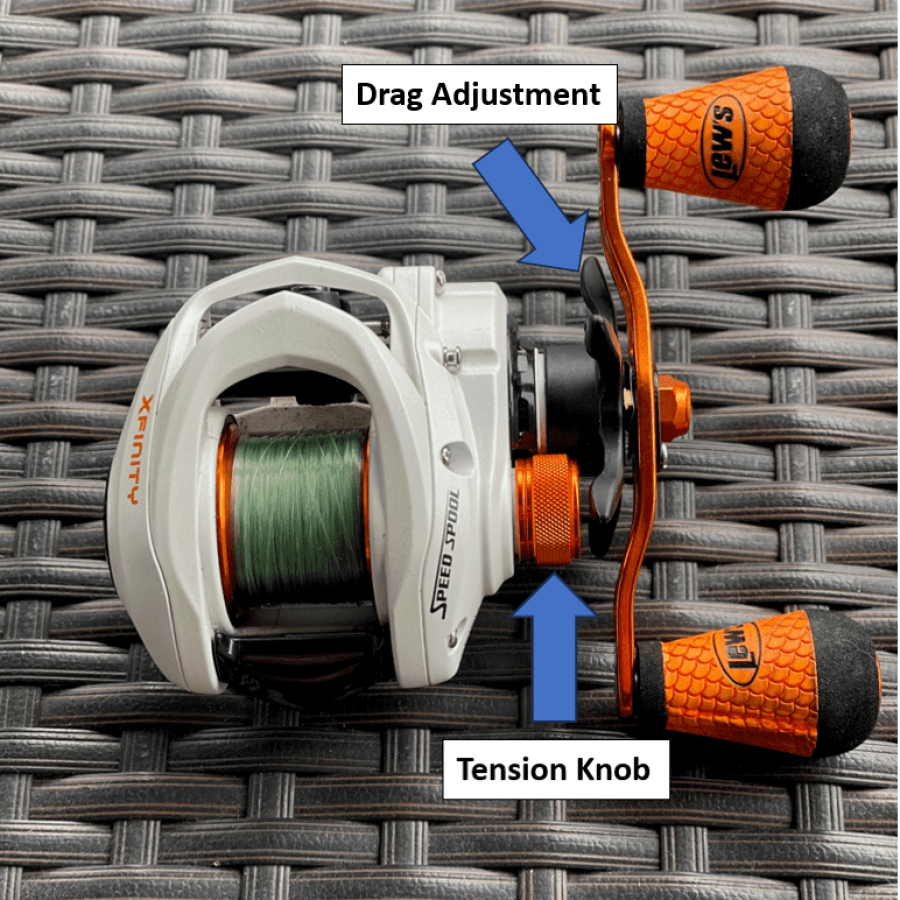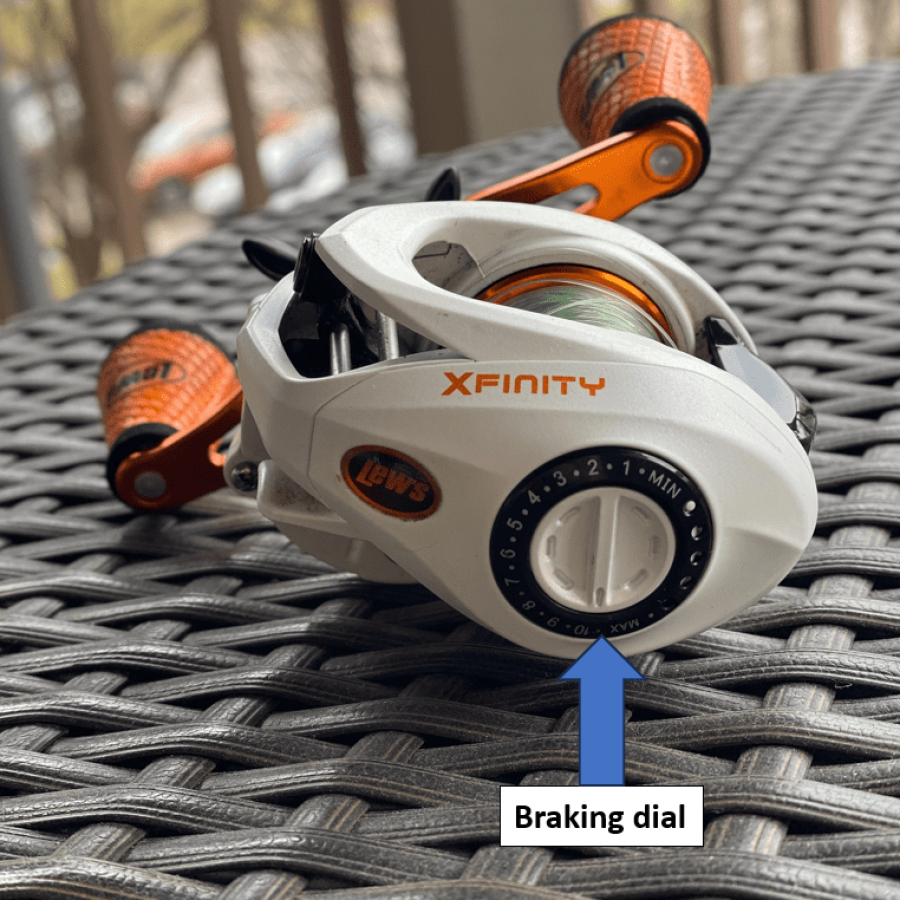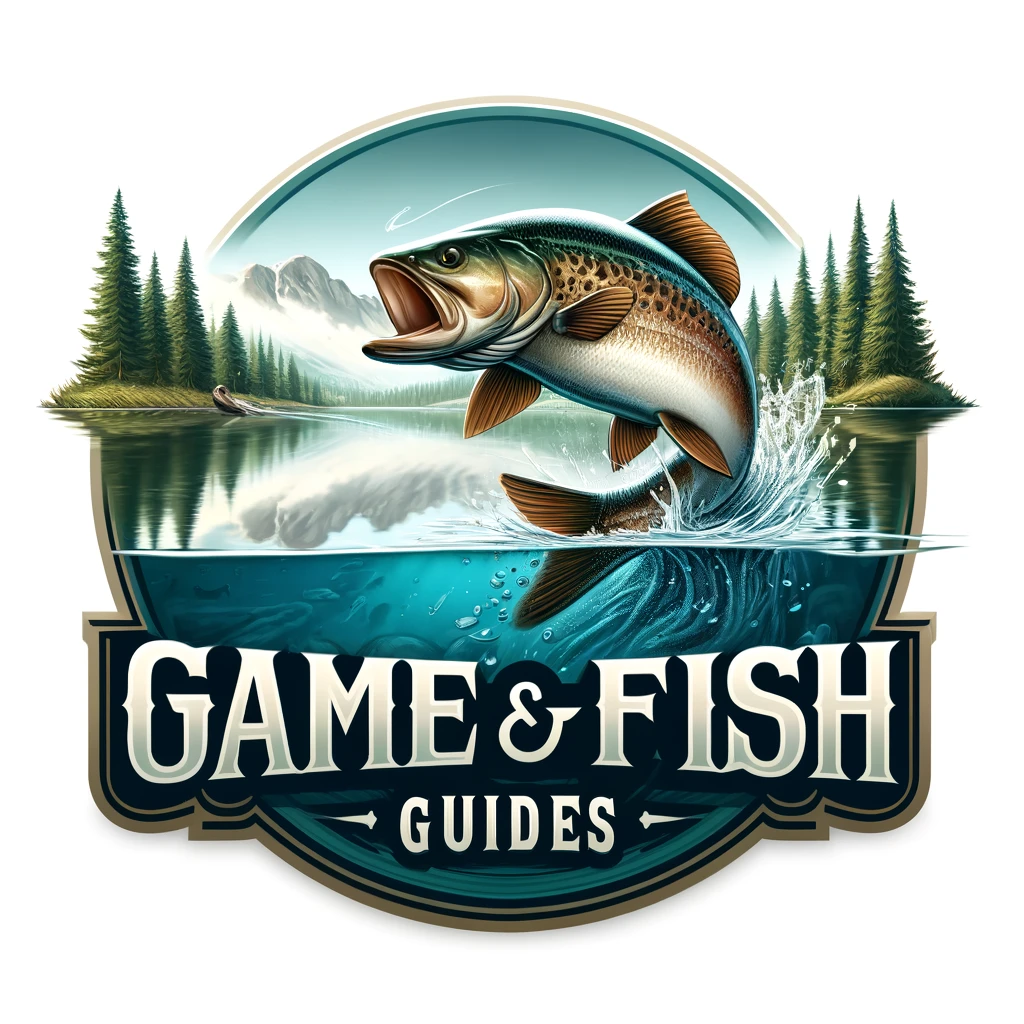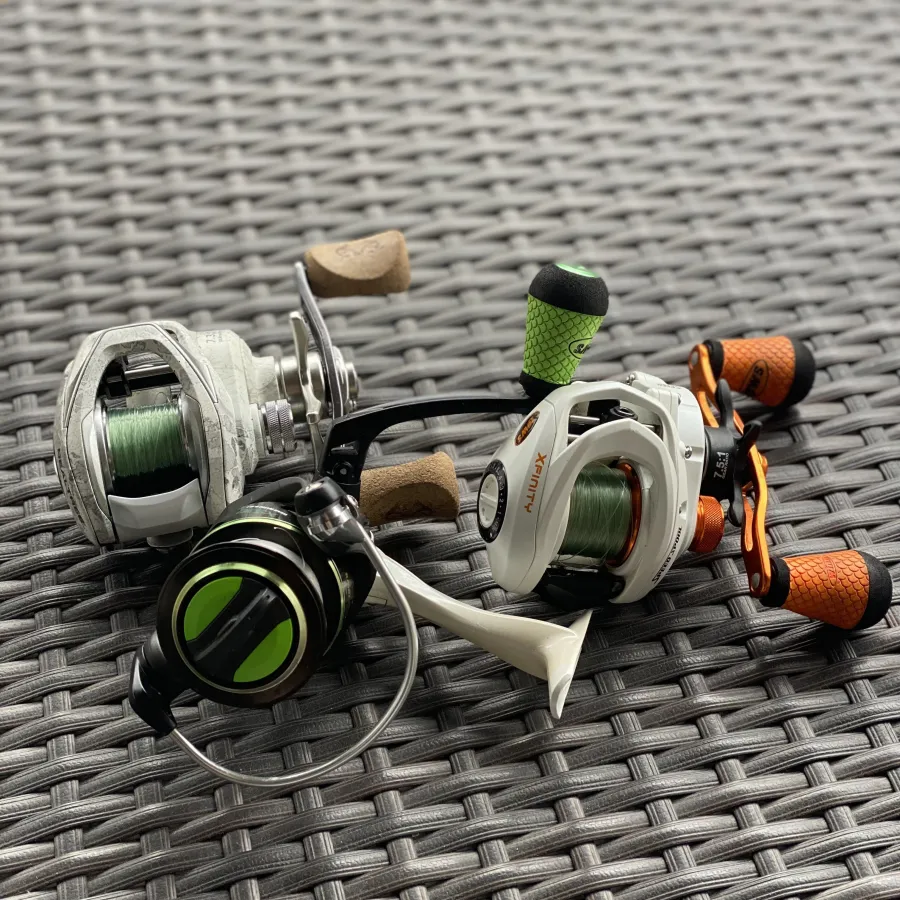In the world of fishing, knowing the 3 types of fishing reels is a key factor to your experience and success. There are three main types of reels: spincast, spinning, and baitcasting. Each type has its pros and cons, as well as its uses.
In this guide, we’ll look closely at each type of fishing reel to help you understand their differences and determine which would be the best fit for you. We’ll cover the aspects of each reel type, including their design, usability, and pros and cons, to provide a clear and practical overview so that when you’re done reading, you understand perfectly.
So, you might be asking yourself, what kind of fishing reel should I buy? Let’s find out.
Fishing Reel Type: Spincast Reel
The Spincast reel came onto the scene in the mid-20th century, and they quickly became a favorite for newcomers to fishing. Their design prevents the usual complications from other reels, such as backlashes/tangles.
Today, the spincast reel is still very popular for newcomers, kids, and even people just looking for inexpensive setups.
Features and Design
These fishing reels are designed with a metal nose cone that covers the key components like the spool, which is the main reason these are good at preventing tangles. The button on the back of the reel is a button that switches the line between the free-spool for casting and locked.
This design choice is what makes these reels easy and great for kids and beginner anglers alike.
Additionally, these fishing reels come with a drag system with an adjustment mechanism, which is crucial for controlling how much resistance a fish feels on the line. This adjustment is typically found on the top of the reel directly in front of the casting button. Usually, this mechanism is slidable to either “+”, or “-“.
In the journey of understanding different types of fishing reels, it’s important to know that the simplicity of these reels makes them a great starting point for beginners to learn the basics of fishing reel operation without the complexities found in other types.
Casting
Casting is simple and quick, especially for kids and newcomers. All you have to do is press the button on the reel, which releases the fishing line. As you swing the rod, pressing the button will make the line fly out toward your casting target. Stopping the line again is done by simply pressing the button again.
This ease of use is a significant reason why spincast reels are so popular for kids and newcomers. Not to mention they are generally much cheaper.
Advanced Tips
To keep your fishing reel in good condition, a bit of regular maintenance goes a long way. Clean up the inner parts now and then to keep the reel nice and smooth.
And if you’re looking for quicker line retrieval, look for a model that has a higher gear ratio listed. The gear ratio will be listed as something like “4.2:1”, which means that every full handle turn makes the spool go around 4.2 times.
Pros & Cons
Pros:
Budget-friendly, and great for any skill level.
User-friendly with easy push-button casting.
Low maintenance thanks to the enclosed design.
Less likely to tangle lines.
Cons:
Not as durable as some other reel types.
Functionality, customization, and performance are not as good as other reels
Not the best choice for heavier fishing or catching large fish.
Can struggle with heavier lines.
Summary
Out of 3 kinds of fishing reels, spincast reels are great for kids, new anglers, or even just people who want a cheap reel to go fishing. They offer the basics of what you need to fish: affordability, ease of use, and reliability for light to moderate fishing.
However, their limitations in terms of build quality, customization, and casting capabilities are factors to consider depending on what you’re fishing for and what type of fishing you’re trying to do.
Fishing Reel Type: Spinning Reels
Spinning reels are one of the most powerful fishing reels known for their extreme versatility. They can be used for nearly all kinds of fishing. They are made as freshwater reels and saltwater reels.
That includes ice fishing, surf fishing, bass fishing, crappie fishing, deep sea fishing, and many more. They come in ultralight sizes to extra heavy duty, and are great for casting distances not reachable with other reels.
In addition to this, they are extremely easy to use for most anglers.
Specifications
With spinning reels, the spool itself does not rotate to wind the line back onto the reel when you reel. Instead, the bail arm rotates around the fixed spool and lays the line on it. This is different from baitcasting or spincast reels, where the actual spool itself is rotating. With spincast reels, the spool cover works to control the line and prevent tangles.
However, baitcast reels are another story, which we will talk about next. Anyway, the fixed spool design in spinning reels is what helps to minimize line twists and backlashes, as the line is tightly controlled by the arm.
The drag adjustment mechanism, which is located on the front of the spinning reel, allows you to control how much resistance is felt when a fish pulls on the line. You simply turn the knob to tighten or loosen the drag.

Versatility
Out of every kind of fishing reel, a spinning reel is highly versatile, as we briefly talked about before. Unlike a spincast reel or baitcast reel, spinning reels vary greatly in size and strength. They can be as small enough to fit in your palm, or large enough to take up a dinner plate.
While baitcast reels can be giant, they are not made for ultralight fishing, which we will talk about in the next section.
User Guide
Using a spinning reel involves understanding the drag system and getting your casting technique down. It’s very simple! You flip the metal bail arm up to open the bail, hold the line against the rod with your index finger or thumb and make your cast. As you make your cast, release the line from under your finger or thumb, and then when your bait reaches the water, close the bail manually.
This process requires a tiny bit more practice compared to spincast reels, but it gives control, accuracy, and versatility to your fishing style.
Spinning Reel Pros & Cons
Pros:
Versatile for both big fish and smaller fish
User-friendly drag mechanism with strong pulling power.
Effective with lightweight and heavy-weight lines and lures.
Spinning reels come in various sizes, suitable for lighter gear or heavier gear.
Made as freshwater reels and saltwater reels.
Made for any skill level.
Cons:
Limited accuracy and has more steps to casting than a baitcaster reel.
Inability to adjust oscillation (how fast your line comes out).
Summary
Spinning reels are a great choice for anybody, doesn’t matter if you’re a kid, adult, newcomer, or experienced fisherman. They’re also a great choice for a wide range of fishing types. They have a great balance between ease and capability.
Jigging or casting, ice fishing or surf fishing, a spinning reel provides the versatility needed in a good reel, making it a valuable addition to your fishing gear.
Fishing Reel Type: Baitcasting Reels
Mastering the Baitcaster Fishing Reel
Baitcasting reels are known for their fishing style control and precision. The spool rotates and sits on top of the rod. These reels offer a direct line feed, which is different from spinning or a spincast reel.
The design of a baitcast reel provides durability and efficient functionality. Components like the spool tension knob and braking system allow you to fine-tune the oscillation for lighter or heavier lures.
This adjustability is important for preventing tangles known as “bird’s nests”. These bird’s nests happen because your reel settings, meaning your tension knob and braking system, are not set correctly to the bait you’re using.
For example, if you’re using a heavy jig and have your tension knob too loose and you’re braking system turned too low, you’re going to get a significant backlash. It’s important to adjust this according to the weight of your bait, that is the first step to preventing backlashes.
Expert Angler Insights
Professional anglers usually prefer a baitcast reel because of its versatility, customizability, and accuracy. The customization options available with baitcasting reels make them versatile for many different fishing techniques, like fishing heavy cover or precision drop shots.
Their popularity with bass fishermen and pro anglers is due to the superior handling and control they offer, especially in conditions like bass tournaments where accuracy, versatility, and line strength are critical.
Likewise, there are less steps to casting versus a spinning reel, where you have to manually open the bail arm, hold the line with your finger, and then close the bail arm after casting. With baitcasting reels, you press the button and cast without having to manually close anything, the spool will lock again as soon as you start reeling.
Therefore, in tournaments where time is money, being able to get off repeated quick casts is important.
Skill Development
Mastering a baitcaster is all about practice and getting comfortable with your reel. The key is thumb control. As you cast, you want to use your thumb to control the speed at which the line unspools. Start by pressing your thumb down on the spool, then as you swing the rod, lessen the pressure just enough to let the line out smoothly. When your bait hits the water, press your thumb down to stop it completely.
Too much pressure and you won’t cast far; too little and you’ll end up with a nice bird’s nest. It’s better to have too much pressure than not enough, so do this gradually if you aren’t casting very far. Every baitcaster has a set of adjustments for different lures and baits, so getting comfortable with these settings is key.
Tension Knob: Unlike the other two kinds of fishing reels, baitcasters have a tension knob. The tension knob on a baitcasting reel is like a control knob that manages how fast your line comes off the spool. When you decide to switch to different lures, especially if they’re lighter or heavier, you’ll want to adjust this knob. Its job is to make sure your lure doesn’t fall into the water too quickly or too slowly.
I usually will adjust it, point my rod tip down, and release the line to see how fast it comes out. It should come out at a steady pace, but if it creates a significant backlash by just letting it hit the ground, tighten it up a bit. Below is a picture of the tension knob.

Braking Dial: This dial controls how fast the spool on your reel spins when you cast your line. The braking dial is essential for preventing tangles. Depending on the wind conditions or the way you’re casting, you can adjust this dial, but usually, the tension knob is what you want to change for different bait sizes.

Pros & Cons
Pros:
Unmatched in control and precision, good for experienced anglers.
Effective with heavy lines and larger fish.
Highly customizable for different fishing techniques.
Improved casting distance and accuracy.
Cons:
The steep learning curve. Meant for an experienced angler.
Generally more expensive, with a wide price range.
Prone to line tangles without proper technique.
Regular adjustments are required for optimal performance.
Summary
Baitcasting reels stand out from the other two reels for their mechanical sophistication and precise control. They are designed for advanced anglers who use a variety of bait. While their complexity and cost might be intimidating for beginners, the investment in learning and using a baitcaster is so worth it.
I also want to point out that these aren’t that hard to use. It may sound hard to use, but with a little practice, you’ll find that they aren’t as hard as it may sound.
Wrapping Up
After this guide, understanding the different types of fishing reels should be second nature. It’s time to pick the one that suits your needs best. In this guide on fishing reels, we’ve looked at spincast, spinning, and baitcasting reels, each with its unique qualities.
Spincast reels are perfect for newcomers, kids, or anyone looking for an affordable setup. They’re simple to use, low maintenance, and ideal for lighter fishing. Keep in mind that they aren’t a good choice for heavier fishing.
A spinning reel is the versatile all-rounder in the fishing world. Doesn’t matter if you’re ice fishing, bass fishing, or anything in between, they offer adaptability and ease of use to catch fish. They do require a bit more practice than spincast reels, but in return, you get much higher quality, versatility, and selection.
Baitcasting reels are the precision fishing reels in your arsenal. They’re the reel of choice by experienced anglers for their accuracy, versatility, and customizability. However, learning to use a baitcaster takes practice, and you’ll need to make adjustments for optimal performance.
See Next: Beginner Fishing Guide
CITATIONS
https://kastking.com/blogs/buying-guides-reviews/what-are-the-different-types-of-fishing-reels

